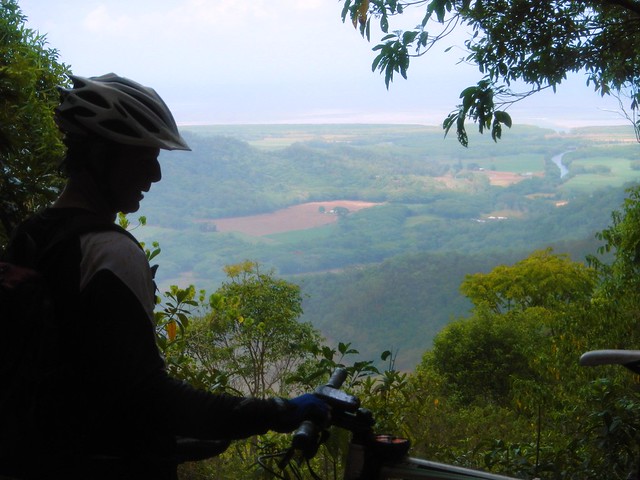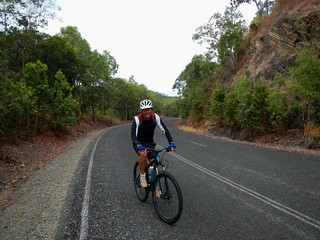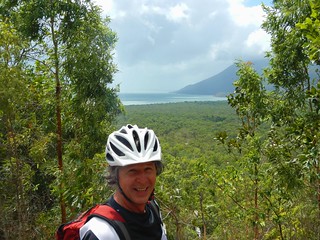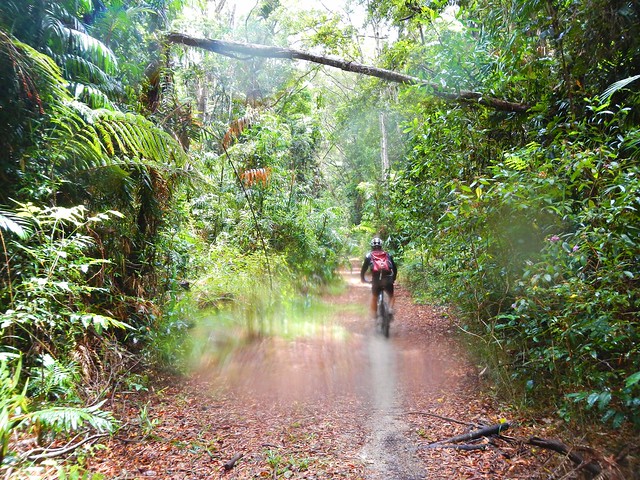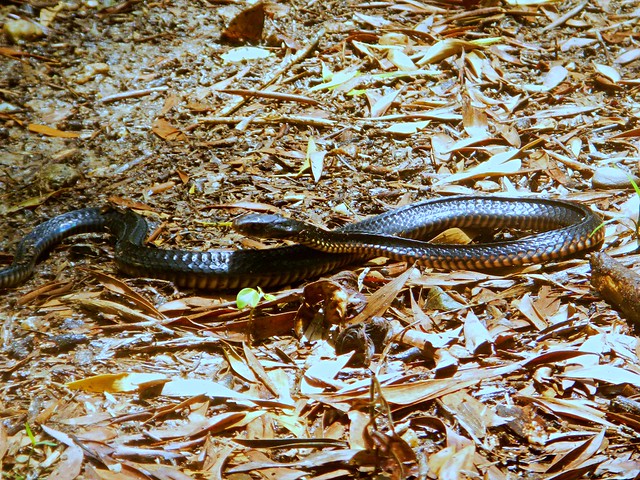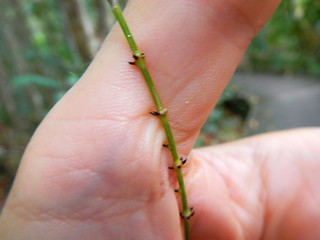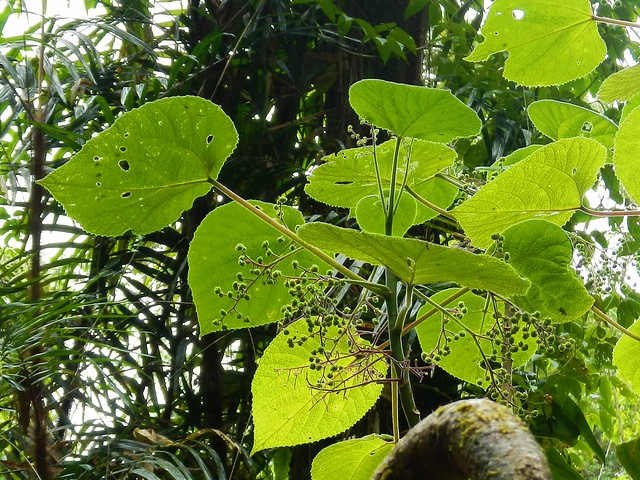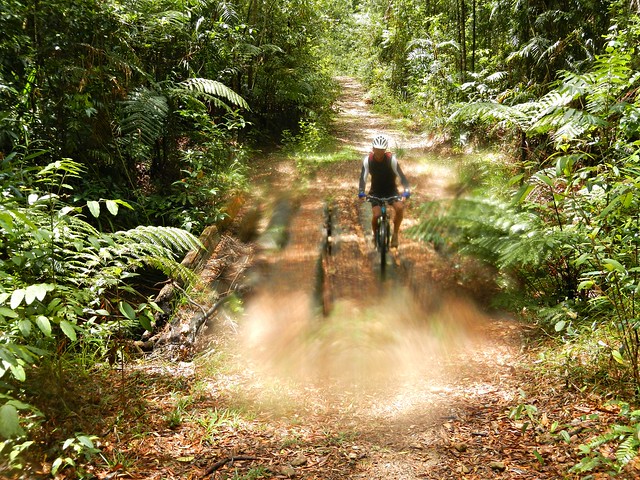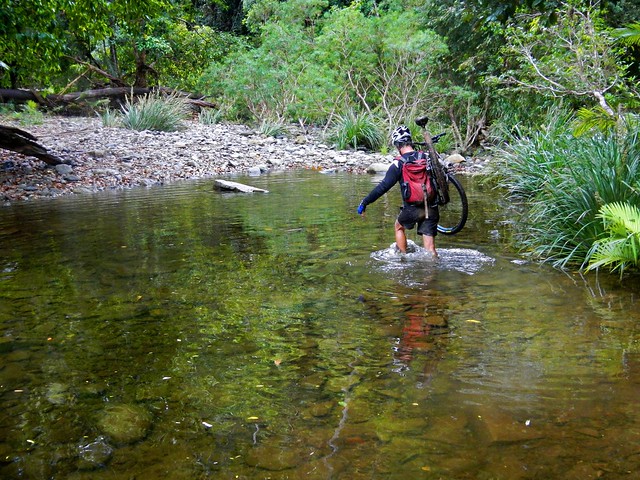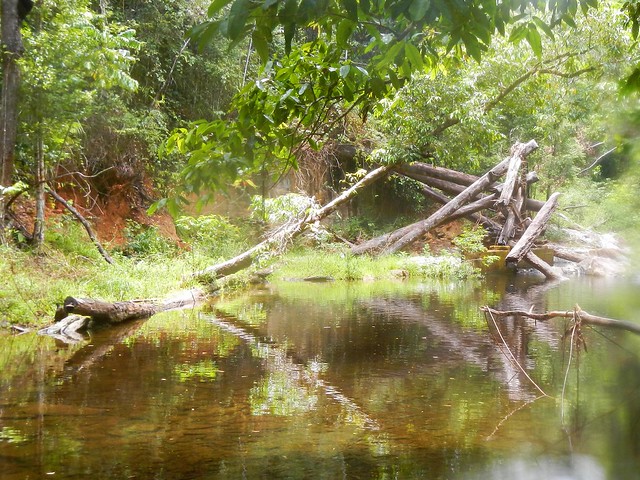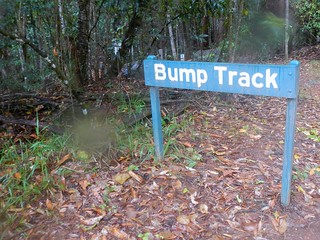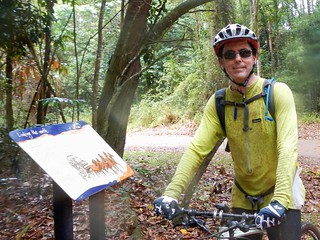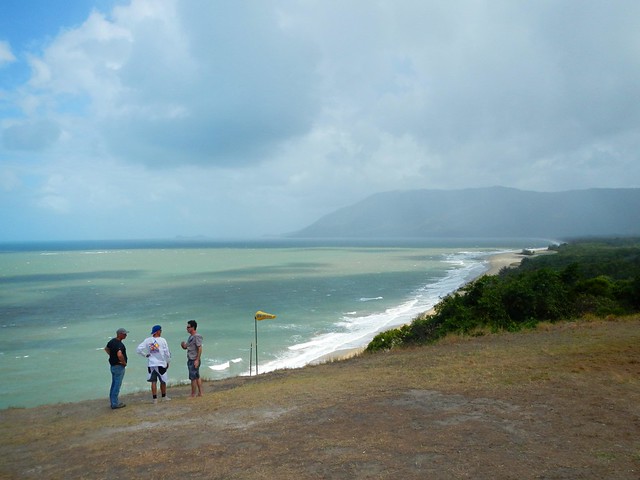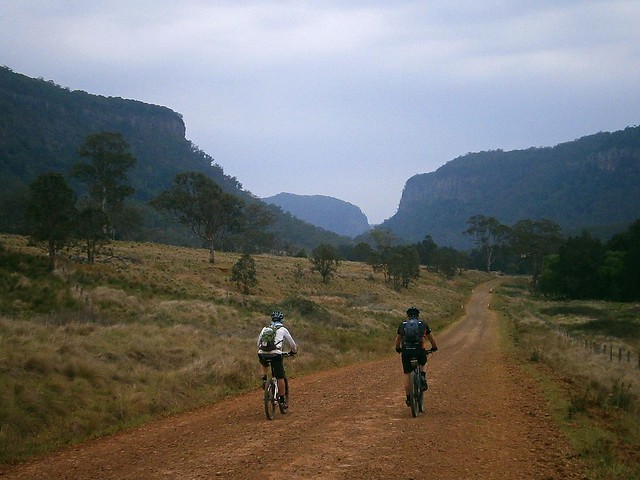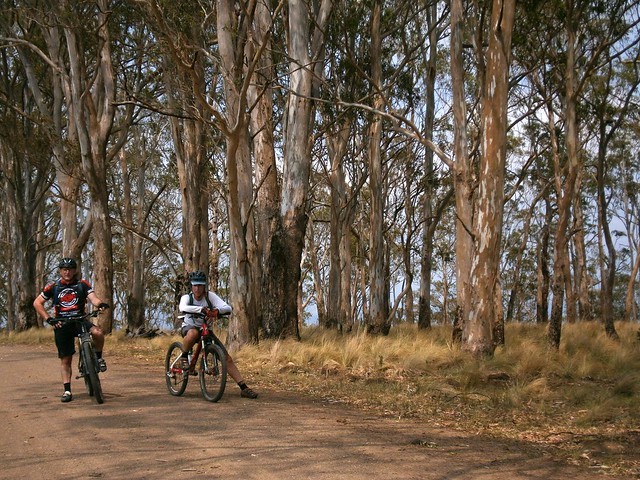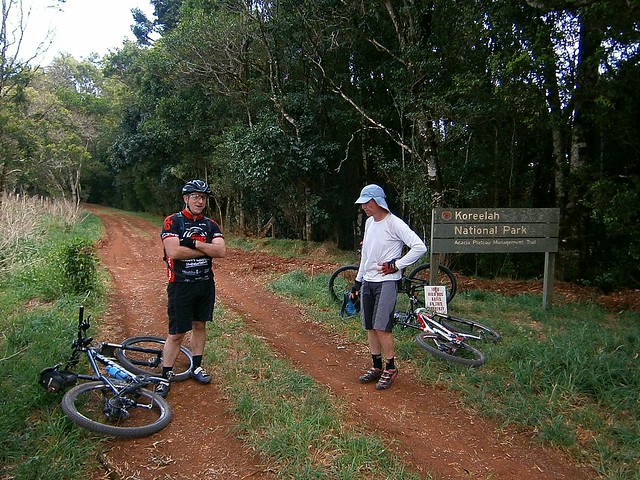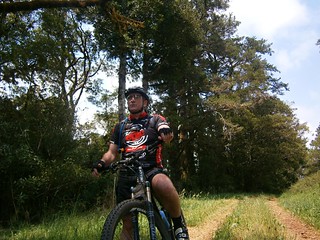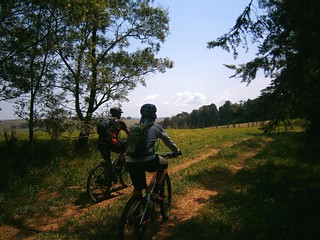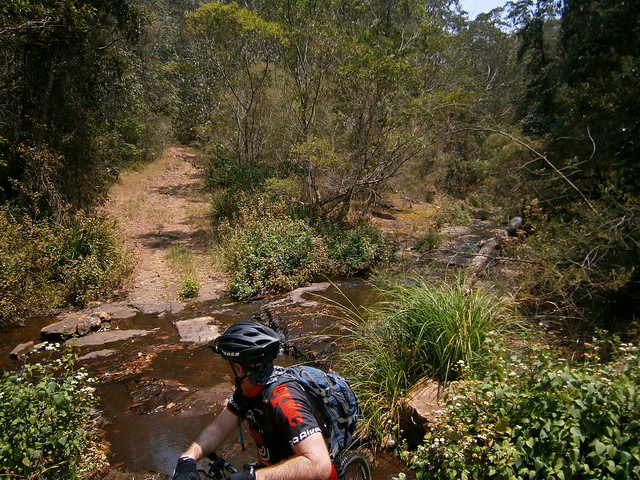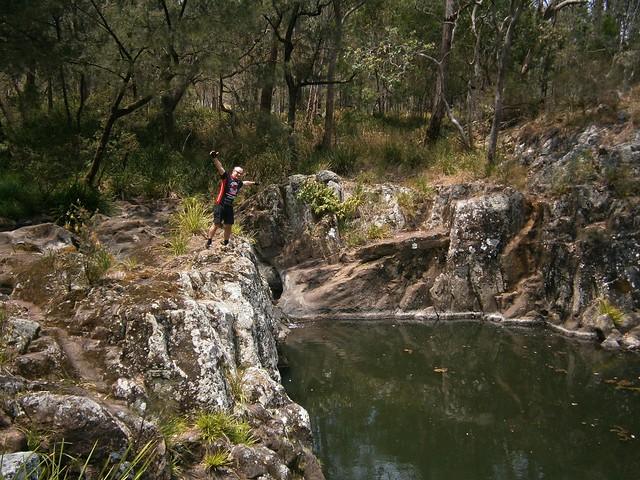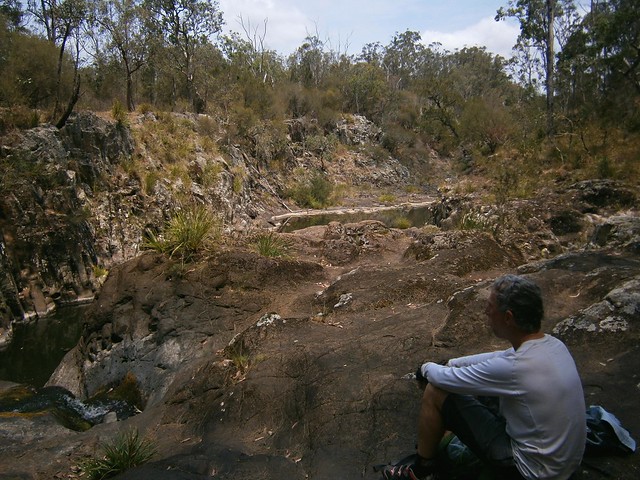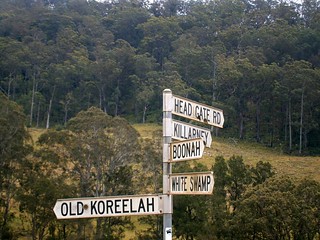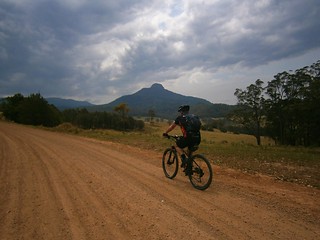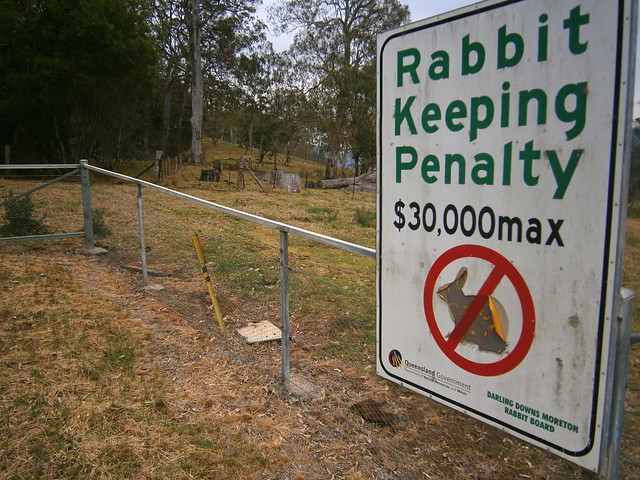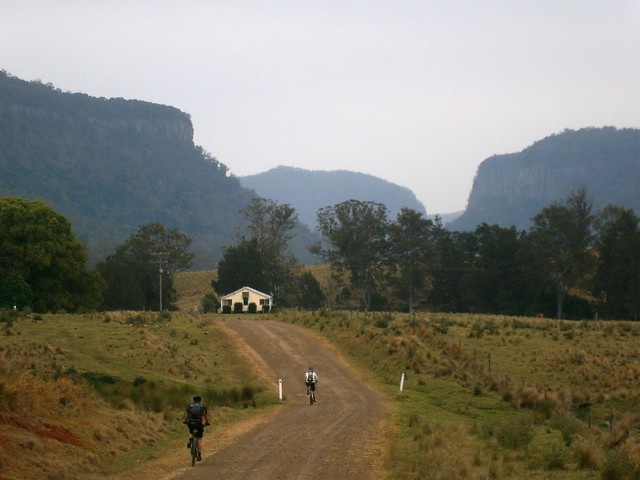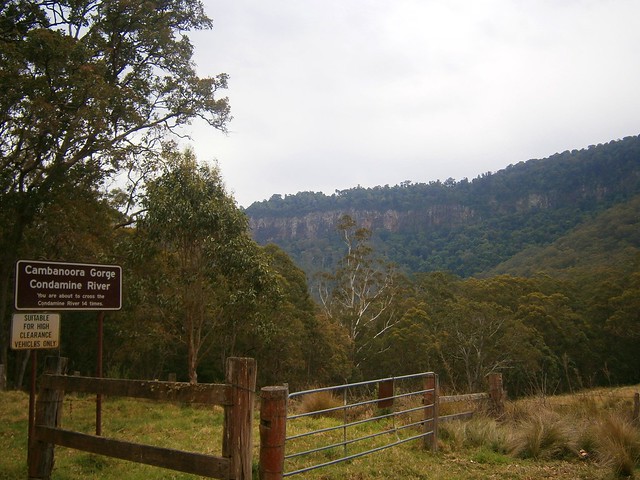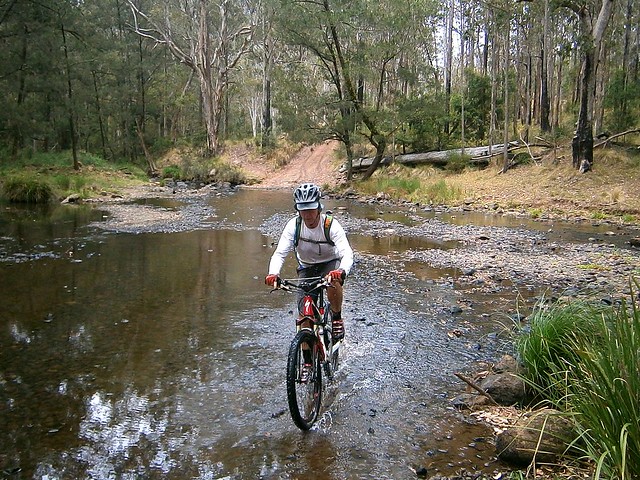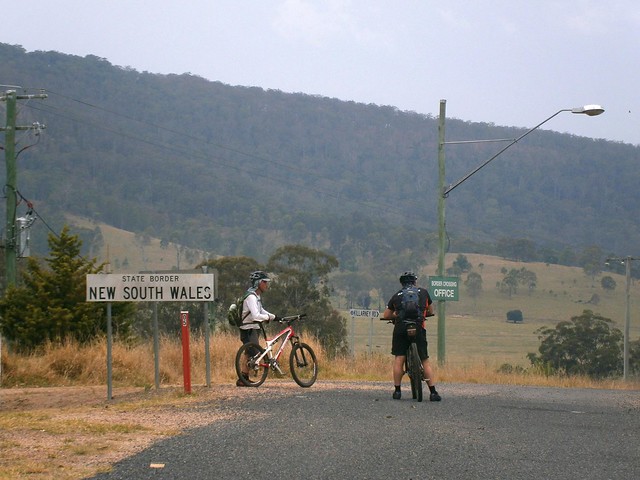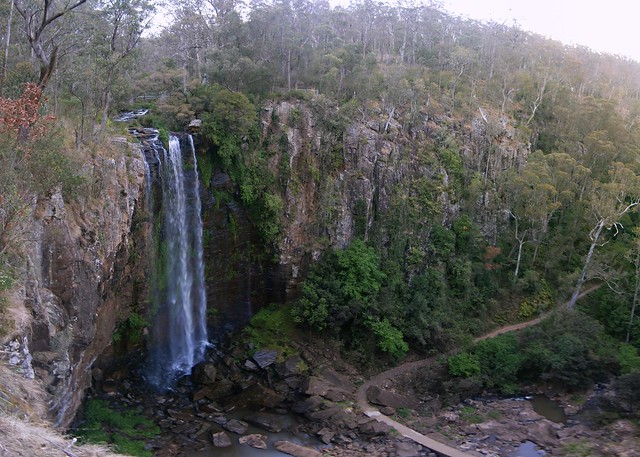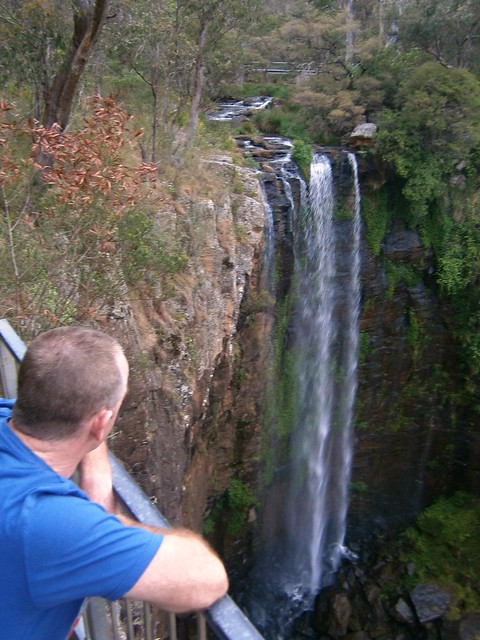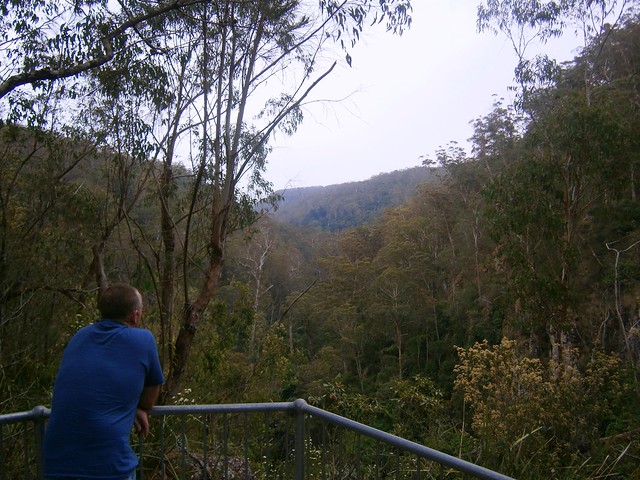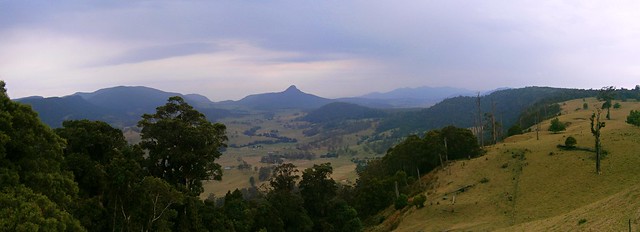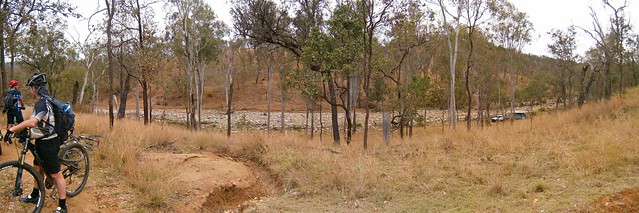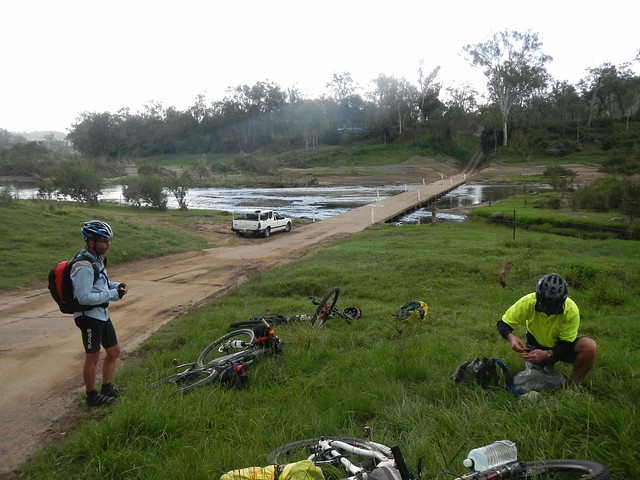
If you traced the Brisbane River as far upstream as you could, you’d end up near Mount Stanley, to the east of Nanango in the South Burnett. Today’s epic adventure was a point-to-point ride starting at Nanango, rolling down the slopes of Mount Stanley and following the upper reaches of the Bribane River to Linville, before heading up the Conondale Range to the small forestry town of Jimna.

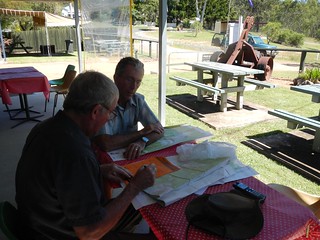
Before setting out we met with Dave Wright, a Jimna community leader who runs the local visitors information centre. He’s lived here since the 1940’s when his father was a timber worker, so Dave is well-acquainted with the forest trails in this part of the world.
I left my van at Jimna, and got a lift in Eric’s car to Nanango where we stayed the night, so we could get an early start the next day.


We stayed at Uncle Bobs Cottage – a B&B in East Nanango on the edge of the State Forest. Our hosts, Rod and Celia Price run an organic vineyard there, and kindly let us try some of their delicious Verdellho.
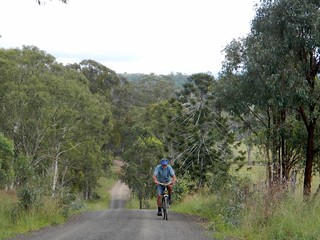
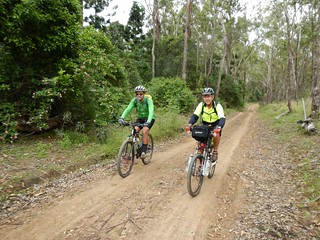
Rod decided to dust off his old mountain bike and ride with us part of the way up the nearby hills. His property is surrounded by a network of trails through local hoop pine forests, so his B&B is an ideal base from which to explore the local forests – especially if you like good wine 🙂
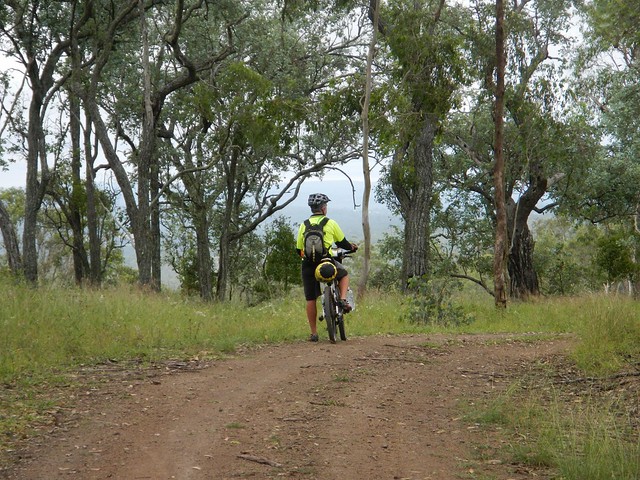
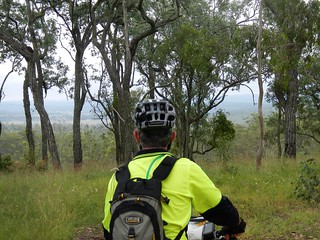
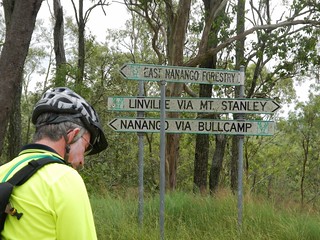
After leaving Rod, we slowly made our way towards the edge of the Great Dividing Range which gave us some great views of the South Burnett.
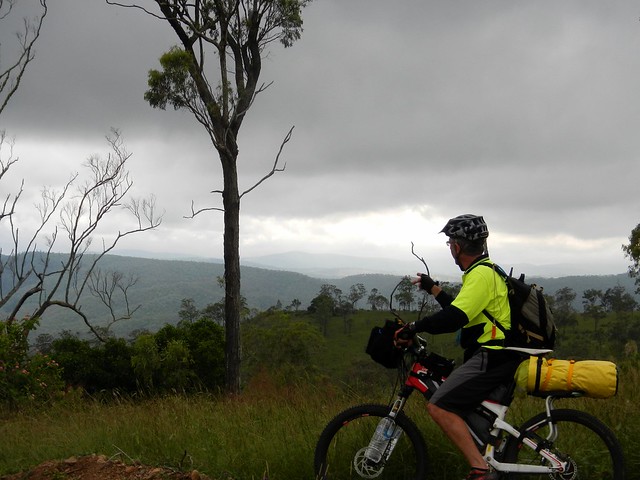

Eventually we were able to look down into the valley surrounding the upper reaches of the Brisbane River near Mount Stanley, before enjoying a long steep descent down to the river.

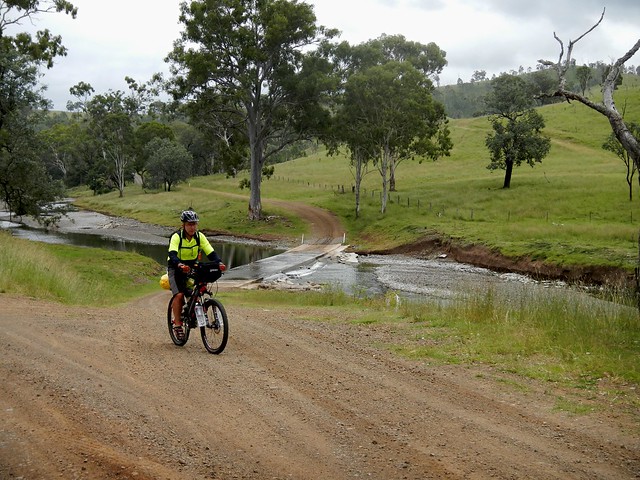
It’s hard to believe this is the same muddy brown river that meanders through the city. Up here it’s pristine, crystal clear, and delightful.

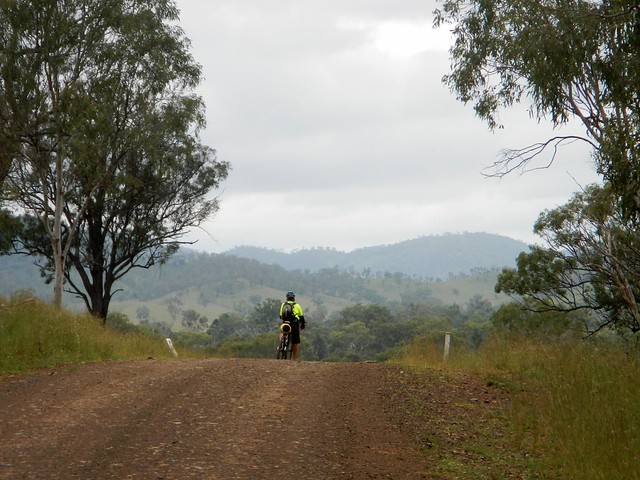
The road follows the meandering course of the river, undulating over gentle hills. It’s an easy ride with pleasant views.

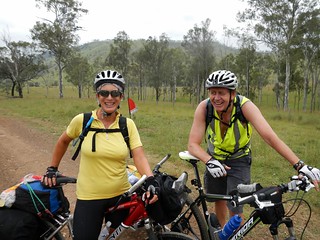
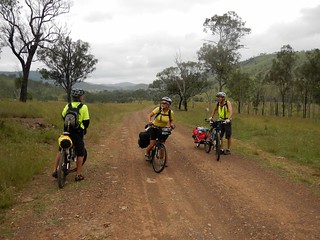
We were pleasantly surprised to meet a couple of touring cyclists, Andrea and Wayne from Bli Bli who were making their way up to Nanango. After the steep descent we’d already made down Mount Stanley Road, Eric and I could only wonder at what sort of hard work they had ahead of them to get up the range.


We crossed the river at least a dozen times – sometimes over dry causeways, sometimes through water. This is one place you wouldn’t want to ride after heavy rain.
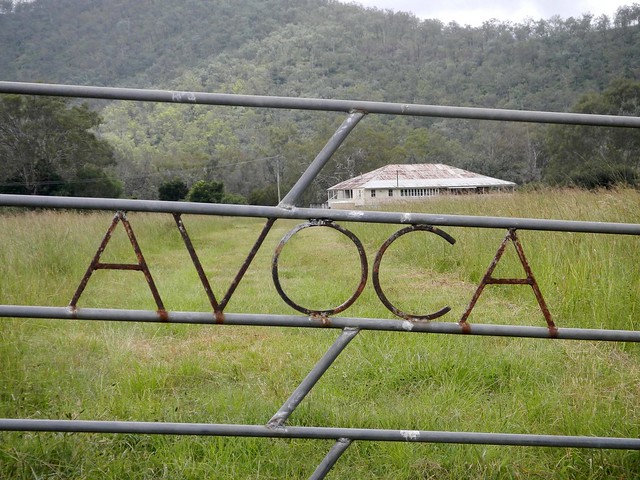
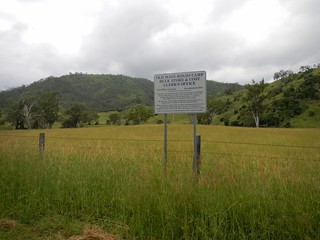
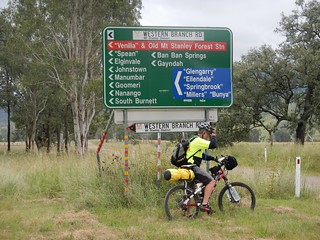
We passed a few old buildings and historic sites which hinted clues about the history of the district. When we finally reached the junction of the East and West branches of the Brisbane River, I was surprised at how many different places you could get to from this remote spot.
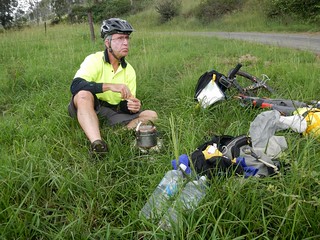
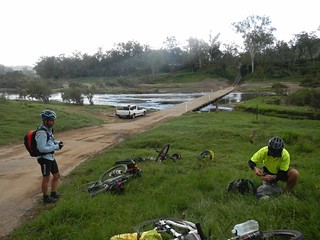
We stopped for lunch by the Brisbane River near where it meets with Monsildale Creek. Eric was carrying a lot of gear because he was camping that night. This meant he was able to boil the billy and make us a hot drink. Our friend Rients joined us here too. He had ridden up from Brisbane the day before, via Esk and Moore (about 150km), and was also planning to camp with Eric that night.

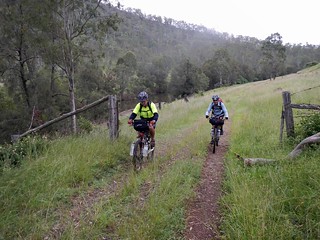
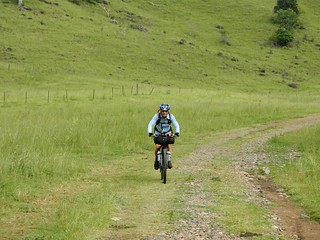
From here we rode eastwards along Monsildale Road. The road follows Monsildale Creek, and we had to wade across it several times. At one deep point Eric was up to his chest in water as he carried his bike across. I let him cross first, and watched carefully to make sure it was safe 🙂 Eric’s bike was heavily laden with overnight camping gear, so it was hard work hoising it above his head and wading across the creek.
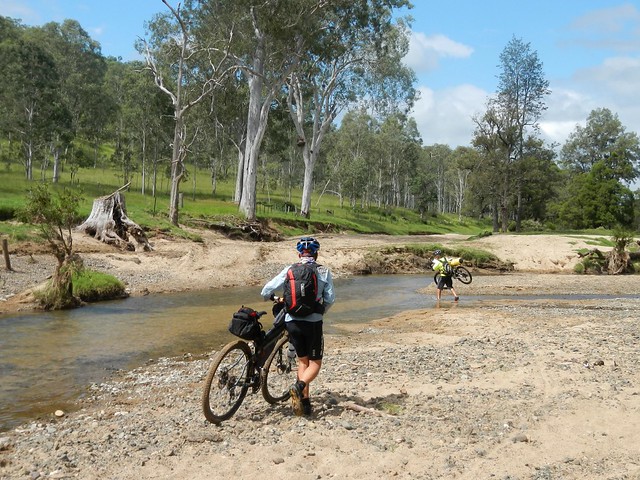
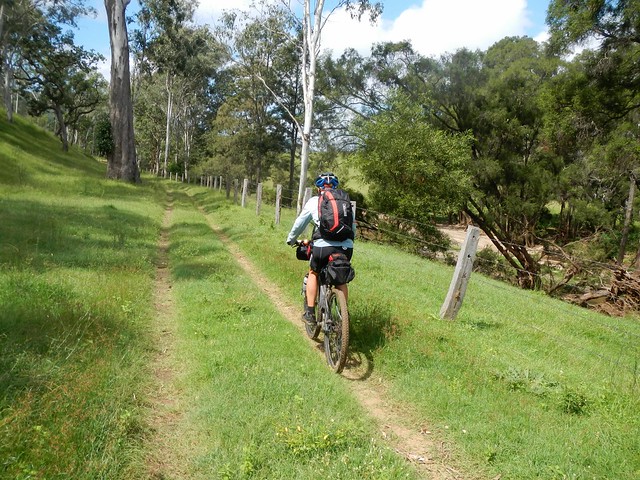
As we headed east, the “road” devolved into a track until it was quite clear we were riding along someone’s very long driveway.
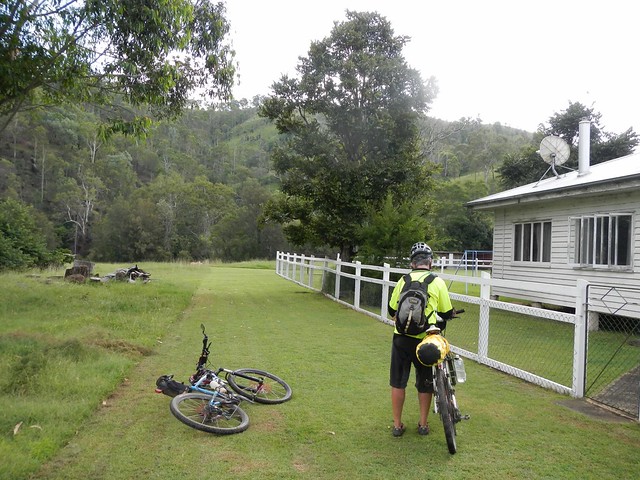

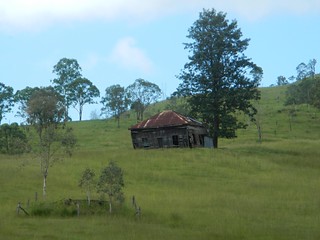
We eventually reached the farmhouse. This cattle property is owned by the Gillyland family, who kindly let us ride through. We said “g’day” to family elder, Stumpy, who was cleaning a huge fish out the back. “So you’re heading to Jimna, hey?” he asked. “You’ll have to go up the side of Mount Buggery to get there” he commented – hinting about the steep climb we had ahead of us.
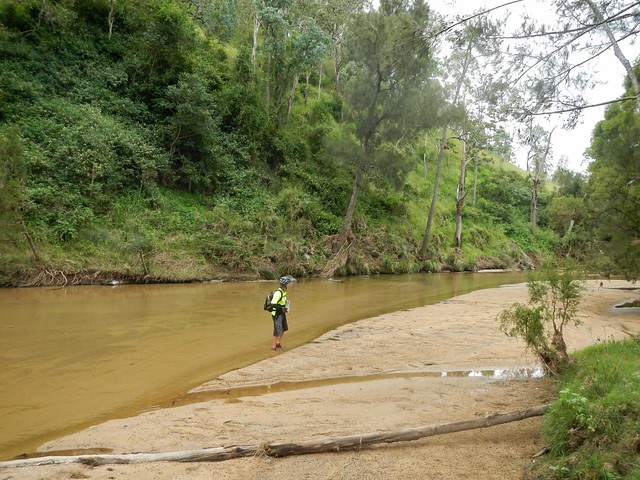
Monsildale Creek was crystal clear as we rode beside it. We took this opportunity to re-fill the water bottles before the climb.
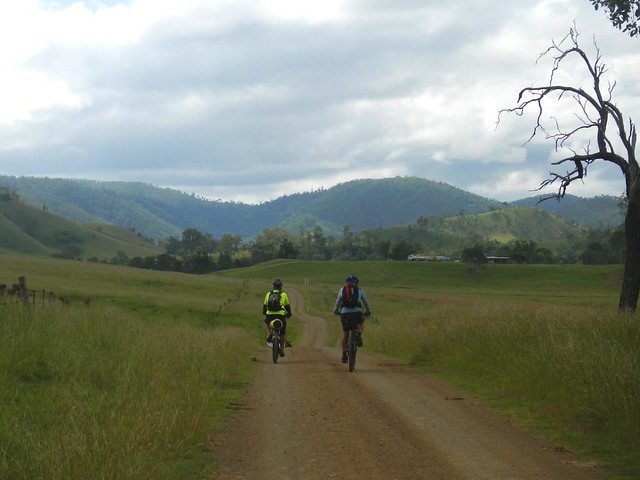
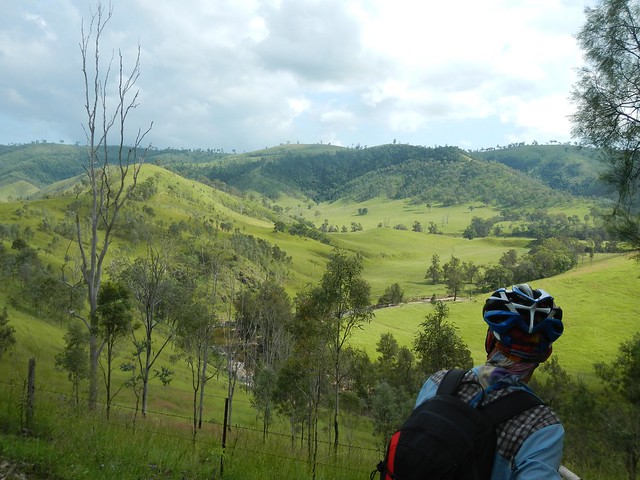
Our track gradually morphed from a pleasant country road to a steep winding forestry track as we slowly made our way up the Conondale Range. “Mount Buggery” I kept muttering to myself as I remembered Stumpy’s words. It definitely was hard work after the distance we already had put in.
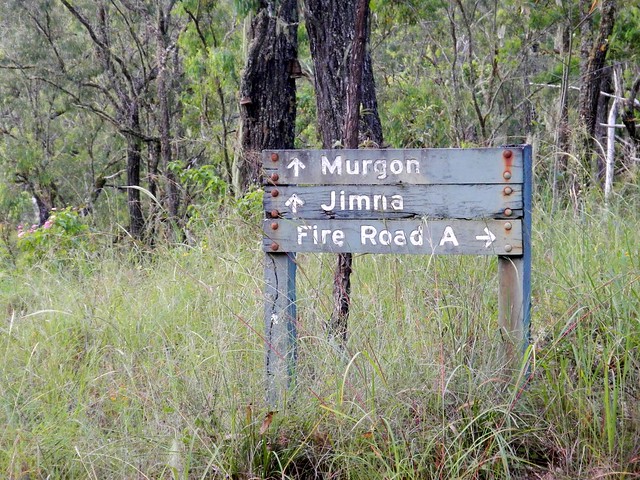
At this stage, Rients and Eric motored up the hill with their super-human legs. I slowly followed wondering what sort of diesel engine these guys were carrying. A worn out old foresttry sign gave me hope that our destination wasn’t too far away.
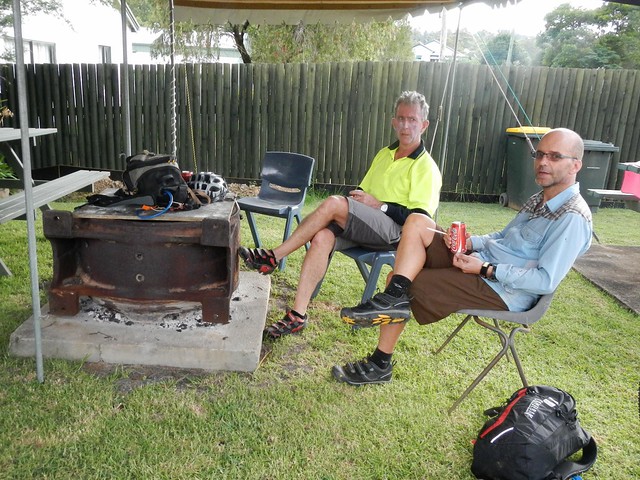
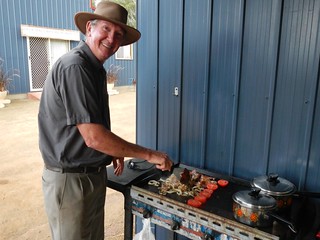
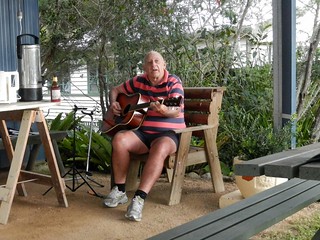
And before we knew it we had arrived in Jimna. Dave was busy at the barbequeue, frying up hamburgers for us, and Charlie entertained us with an old song, “Sweeney” by Henry Lawson.
We rode 90km in just under 9 hours including breaks. I burned almost 3,500kcal and we climbed almost 1,800m. This was a tough ride. If you’re doing the entire trip from Nanango to Jimna, I’d rate it 9 out of 10 on the tough-o-meter, because of the steep climb at the end, the many creek crossings, and the logistics of getting enough food and water to last the distance.
If you take the easy option and ride from Nanango to Linville, I’d rate it 7.5 out of 10.
Either way, this is not a ride to do after heavy rain, and as a point-to-point ride, it requires planning to get to and from the end-points.
Thanks Eric and Rients for a great ride.
Thanks Rod and Celia for your warm hospitality.
Thanks Dave and Charlie for the delicious food, and stellar entertainment 🙂
And thanks to the Gillyland family for letting us pass through their beautiful property.
Total climbing: 2775 m
Average temperature: 21.9
Total time: 08:44:57
More data



































